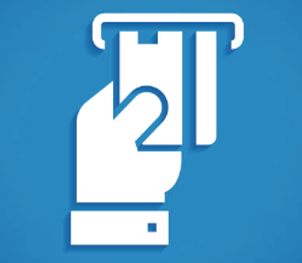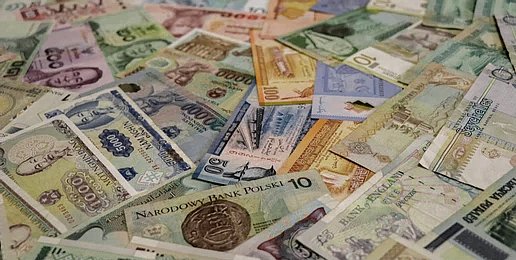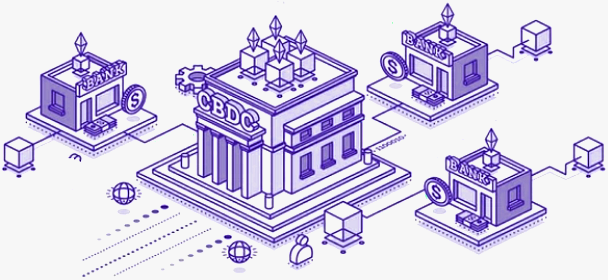Accredited InvestorsAltcoinAnatoli UnitskyAnti-Money Laundering (AML) In CryptoAPIArbitrageArtCoin TokenArticle DirectoryASICAuction Terminology GlossaryBasics of Stock Market InvestingBear MarketBest Crypto Payment Provider In the WorldBitcoinBlockchainBlockchain ConfirmationBlockchain Consensus MechanismBlockchain ForkBlockchain GlossaryBored Ape Yacht ClubBuild a Business That OutperformsBull MarketBuying SkyWay SharesByzantine Fault Tolerance (BFT) ExplainedCasascius CoinCentral Bank Digital Currency (CBDC)Centralized Crypto ExchangeCoinCoinsetCold WalletCollateralCommodity Futures Trading Commission (CFTC)Cross-Chain TechnologyCRUCrypto ExchangeCrypto GlossaryCrypto JokesCrypto Terms to KnowCrypto TickerCryptocurrencyCryptographyCryptojackingCryptounit BlockchainCryptounit GlossaryCryptounit ProgramdApp (Decentralized Application)Dead CoinDecentralized Exchange (DEX)Decentralized Finance (DeFi)Difference Between Bitcoin and EthereumDifferent Ways of Investing MoneyDigital CurrencyDistributed LedgerDo Your Own Research (DYOR)Dollar Cost Averaging (DCA)Dow Jones Industrial Average (DJIA)EncryptionERC-20ERC-721EthereumEvoScentFear Of Missing Out (FOMO)Fear, Uncertainty and Doubt (FUD)Fiat MoneyFNT Fintech CompanyGenesis BlockGlobal Unit PayGlossary of Banking TermsGlossary of Business TermsGlossary of Financial TermsHalvingHODLHot WalletHow Do I Start InvestingHow Rich is Satoshi Nakamoto?How to Create a BlockchainHow to Find Private InvestorsHow to Get Into FintechHow to Program Smart ContractsI Am Thrilled to Be a Part of This Global ProjectInitial Coin Offering (ICO)Initial Public Offering (IPO)Initial Token Offering (ITO)Innovation Basalt TechnologyInnovative Transportation TechnologiesInternational Bank Account Number (IBAN)Investing in Gold Mining StocksInvesting in Gold MiningJagerJoy of Missing Out (JOMO)Know Your Customer (KYC)LedgerLiquidity in CryptocurrencyMaker and Taker Fees in Crypto TradingMarket Capitalization (Market Cap)Meme CoinMetal Credit CardMetaMaskMillenials Now Have Access to Generational WealthMy Best Investment EverNew Digital EvolutionNFT GlossaryOff-Chain TransactionsOn-Chain TransactionsOpen Edition NFTPeer-to-Peer (P2P)Personal Loan GlossaryProbably the Best STO on the MarketProof of Stake (PoS)Real Estate Glossary of TermsReal Estate Investing GlossaryRebase TokenSecurities and Exchange Commission (SEC)Security Token ExchangesSecurity Token Offering (STO)Soulbound Decentralized Identities for Security TokensSoulbound ID Launch by Stobox Proves a SuccessSoulbound TokensStoboxStock Market GlossaryTestimonialsTether Platform and Token (USDT)UnitEx ExchangeUnitsky String TechnologiesUNTBUSDUValidatorWe Started Investing When We Were 25What are Blue Chip NFT?What are Blue Chip Stocks?What are Crypto Assets?What are Crypto Smart Contracts?What are CryptoPunks NFT?What are Digital Assets?What are Digital Collectibles?What are Gas Fees?What are Gas Wars?What are Hashmasks?What are Non Fungible Tokens?What are Non-Sufficient Funds (NSF)?What are Soulbound Tokens (SBT)?What are Stablecoins in Crypto?What are Transactions Per Second (TPS)?What are Utility NFTs?What are Utility Tokens?What Does Burning Crypto Mean?What Does Diamond Hands Mean?What Does Paper Hands Mean?What Does To The Moon Mean?What Does WAGMI Mean?What Happened to Satoshi Nakamoto?What is a 51% Attack?What is a Baby Boomer?What is a Backlink?What is a Banner?What is a Barcode?What is a Bid-Ask Spread in Crypto?What is a Block in Blockchain?What is a Block Reward?What is a Blockchain Address?What is a Blockchain Node?What is a Blockchain Oracle?What is a Blog?What is a Bond?What is a Bot?What is a Broker?What is a Business Accelerator?What is a Cash Cow?What is a Commercial Bank?What is a Commodity?What is a Con?What is a Credit?What is a Credit Limit?What is a Credit Rating?What is a Crypto Airdrop?What is a Crypto Bridge?What is a Crypto Scam?What is a Crypto Token?What is a Crypto Wallet?What is a Crypto Whale?What is a Crypto Winter?What is a Cryptocurrency Public Ledger?What is a Cryptocurrency Roadmap?What is a DAO?What is a Dark Pool?What is a Day Trader?What is a Dead Cat Bounce?What is a Default?What is a Derivative?What is a Digital Credit Card?What is a Fiscal Quarter?What is a Fungible Token?What is a Governance Token?What is a Grace Period?What is a Hard Fork?What is a Hot Wallet?What is a Hybrid Blockchain?What is a Hybrid PoW/PoS?What is a Joint Account?What is a Market Cap?What is a Merkle Tree in Blockchain?What is a Mining Farm?What is a Nonce? What is a PFP NFT?What is a POS System?What is a Prepaid Card?What is a Private Blockchain?What is a Private Key?What is a Public Blockchain?What is a Public Key?What is a Reserve Currency?What is a Ring Signature?What is a Routing Number?What is a Rug Pull in Crypto?What is a Safe Deposit Box?What is a Satoshi?What is a Security Token?What is a Seed Phrase?What is a Shitcoin?What is a Sidechain?What is a Soft Fork?What is a Spot Market?What is a State Bank?What is a SWIFT Code?What is a Tax Identification Number (TIN)?What is a Time Deposit?What is a Transaction Account?What is a Variable Interest Rate?What is a Virtual Assistant (VA)?What is a Virtual Card?What is a Virtual Currency?What is a Visa Card?What is a Whitelist in Crypto?What is a Whitepaper?What is Accounts Payable (AP)?What is AMA in Crypto?What is Amortization?What is an Accrual?What is an ACH Transfer?What is an Actuary?What is an Addendum?What is an Algorithm?What is an Angel Investor?What is an Annuity?What is an Asset?What is an ATM?What is an Atomic Swap?What is an Audit?What is an Avatar?What is an EIN?What is an Embargo?What is an Entrepreneur?What is an IDO (Initial Dex Offering)?What is an Interest Rate?What is an Internet cookie?What is an Investment Bank?What is an NFT Drop?What is an NFT Floor Price?What is an Ommer Block?What is an Orphan Block?What is an Outstanding Check?What is an Overdraft?What is Artificial Intelligence (AI)?What is B2B (Business-to-Business)?What is B2G (Business-to-Government)?What is Bartering?What is Bitcoin Dominance?What is Bitcoin Pizza Day?What is Blockchain Immutability?What is Blockchain Used For?What is BRICS?What is Business-to-Consumer (B2C)?What is C2C (Customer to Customer)?What is Capitalism?What is Catfishing?What is CFD Trading?What is Check Kiting?What is Cloud Mining?What is Communism?What is Content Marketing?What is Decentralization in Blockchain?What is DeFi in Crypto?What is Delisting?What is Depreciation?What is Digital Marketing?What is Diversification?What is Double Spending?What is Dumb Money?What is Dumping?What is Earnings Per Share (EPS)?What is Economics?What is Email Marketing?What is Equity?What is Etherscan?What is Fintech?What is Foreign currency?What is Forex?What is Fundamental Analysis (FA)?What is GameFi?What is Generative Art NFT?What is Gwei?What is Hard Currency?What is Hash Rate?What is Hashing in Blockchain?What is Inflation?What is Initial Game Offering (IGO)?What is Interest?What is Interest Income?What is Mainnet?What is Mastercard?What is Metaverse in Crypto?What is Mining in Cryptocurrency?What is Minting NFT?What is Mobile Banking?What is Money Laundering?What is NFT Alpha?What is NFT Metadata?What is NFT Rarity?What is NGMI Meaning?What is Nominal Interest Rate?What is Online Banking?What is Open-End Credit?What is OpenSea NFT Marketplace?What is Personal Identification Number (PIN)?What is Play-to-Earn?What is Polygon?What is Proof of Authority (PoA)?What is Proof of Work (PoW)?What is Public Key Cryptography?What is Pump and Dump?What is Quantum Computing?What is Refinancing?What is Retail Banking?What is Ripple?What is Sharding?What is Slippage in Crypto?What is Smart Money?What is Solvency?What is Soulbound ID?What is SSL?What is Staking in Cryptocurrency?What is Technical Analysis (TA)?What is Testnet?What is the Ask Price?What is the Better Business Bureau (BBB)?What is the Bid Price?What is the Dark Web?What is the InterPlanetary File System (IPFS)?What is the Gold Standard?What is the Lightning Network?What is the Prime Rate?What is the Sandbox?What is the Secondary Market?What is the World Bank?What is Tier 1 Capital?What is Tokenomics?What is TRC-20?What is Universal Banking?What is Unspent Transaction Output (UTXO)?What is Usury?What is Volatility in Crypto?What is Wash Trading?What is Web3?What is Whisper?What is XRP?What is Zero-Knowledge Proof (ZKP)?Who is Beeple?Who is Satoshi Nakamoto?Who is Vitalik Buterin?Why Tokenization is a Safe HavenWhy You Should Try Your Hand at Trading
What is an ATM?
- Home
- Glossary of Banking Terms
- What is an ATM?
If you need to withdraw cash, deposit money, or make any urgent fund transfers, going to the bank and waiting in long queues may not be the most convenient option.

In such cases, an Automated Teller Machine (ATM) can be extremely useful. It allows for quick and easy transactions without the need to visit a bank branch.
What is an ATM or Automated Teller Machine?
An ATM is a self-service machine that enables users to perform various banking transactions without the need for a human teller. An ATM can be used to withdraw cash, deposit money, transfer funds, check account balances, and perform other financial transactions.
The first ATM was introduced in 1967 by Barclays Bank in London, UK. Since then, ATMs have become widely used all over the world, providing convenience and accessibility to banking services.
ATMs are available 24/7 and can be found in various locations such as banks, shopping centers, airports, train stations, and other public places. Most ATMs are equipped with a screen and a keypad, allowing users to input their banking information and complete transactions.
To use an ATM, a user must have a bank card or debit card with a personal identification number (PIN). The card is inserted into the ATM, and the user enters their PIN to access their account. Once authenticated, the user can choose from a range of transactions to perform.
Withdrawals are the most common transaction at ATMs. A user can withdraw cash up to the daily limit set by their bank. Some ATMs also allow users to select the denominations of the cash they wish to withdraw. Deposits can also be made at ATMs, with users able to deposit cash or checks into their account.
Transfers are another popular transaction at ATMs. Users can transfer funds between their own accounts or to other accounts within the same bank. International transfers may also be available at some ATMs, depending on the bank's services.
In addition to basic transactions, ATMs may offer other services such as bill payment, prepaid card top-up, and foreign currency exchange. Some ATMs may also have a video or audio feature that connects the user with a customer service representative for assistance.
ATMs have revolutionized the banking industry by providing a convenient and accessible way for users to perform various transactions at their own convenience. With the continued development of technology, ATMs are expected to become even more advanced, offering more features and services to users.
What is an ATM for Cryptocurrencies?
Crypto ATMs allow users to buy or sell cryptocurrencies, such as Bitcoin, Ethereum, and others, using cash or debit/credit cards. They are similar to traditional ATMs, but instead of dispensing cash, they exchange fiat currency for cryptocurrencies and vice versa.
Crypto ATMs typically work in the following way:
- The user selects the type of cryptocurrency they want to buy or sell.
- The user inserts cash into the ATM, or swipes their debit/credit card.
- The ATM verifies the transaction and sends the cryptocurrency to the user's digital wallet, or dispenses cash if the user is selling their cryptocurrency.
- The user can then withdraw the cryptocurrency or cash from the ATM.
Crypto ATMs have become increasingly popular in recent years, with thousands of machines installed around the world. They provide a convenient and easy way for people to buy or sell cryptocurrencies without the need for an online exchange or complicated trading platform. However, it's important to note that crypto ATMs often charge higher fees than online exchanges, so users should do their research before using one.
Types of ATM
ATMs come in different types, each designed to cater to the specific needs of users. Here are some of the types of ATMs:
- On-site ATMs: These ATMs are located within bank branches or on the premises of businesses, such as shopping centers or supermarkets. They are often owned and operated by the bank or business that they are located in.
- Off-site ATMs: These ATMs are located away from bank branches or businesses, such as in public places like parks, train stations, or airports. They are often owned and operated by independent companies that may charge fees for their use.
- Drive-through ATMs: These ATMs are designed for users to access from their vehicles. They are typically located outside bank branches or businesses and have a drive-through lane that allows users to withdraw or deposit cash without having to leave their car.
- Lobby ATMs: These ATMs are located inside bank branches or businesses and are accessible during normal business hours. They are often located near the entrance or lobby of the building and may require users to swipe their card to gain access.
- Mobile ATMs: These ATMs are mounted on trailers and can be moved to different locations as needed. They are often used for events such as fairs, festivals, or concerts, where access to cash may be limited.
- Talking ATMs: These ATMs are designed to assist users with visual impairments or disabilities. They feature audio instructions and Braille keypads to guide users through the transaction process.
- Full-service ATMs: These ATMs offer a range of services beyond basic transactions, such as check cashing, money transfers, and bill payment. They are often located within bank branches or on-site at businesses.
- Stand-alone ATMs: These ATMs are not connected to a bank branch or business and are operated by independent companies. They may charge higher fees for transactions, but are often located in convenient locations such as high-traffic areas or tourist spots.
Related Articles

Fiat Money
Besides government regulation and approval, the fundamental reason why fiat money is considered valuable and useful in our society is...

Central Bank Digital Currency (CBDC)
The primary objective of introducing a CBDC is to provide a secure, efficient, and cost-effective alternative to traditional payment systems. Unlike cryptocurrencies such as...
- Home
- Glossary of Banking Terms
- What is an ATM?